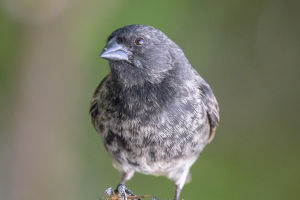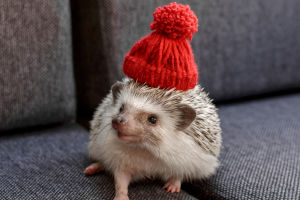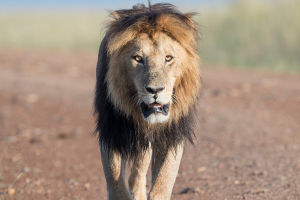Nature's Grand Illusionists

Lykkers, welcome to the enigmatic world of animal mimicry. In a realm where survival is paramount, many creatures have developed astonishing abilities to blend in, deceive, or impersonate others.
This cleverness highlights the brilliance of evolution, showcasing a unique survival strategy that often goes unnoticed amidst nature's regalia of speed and size. Prepare to dive into the captivating universe where stealth and trickery reign supreme!
Understanding Mimicry
Mimicry is a fascinating evolutionary strategy that involves animals imitating the appearances, sounds, smells, or even behaviors of other species. This clever tactic allows them to either evade predators or enhance their hunting prowess. The variety of mimicry can be classified into several distinct types, each serving a specific purpose in the natural world.
The Four Types
Broadly, mimicry can be categorized into four types:
- Batesian Mimicry: Where a harmless species resembles a harmful one to avoid predation. An example is the viceroy butterfly imitating the toxic monarch, relying on its resemblance to escape danger.
- Müllerian Mimicry: This occurs when two or more harmful species evolve similar warning signals, reinforcing their defenses and deterring predators through mutual recognition.
- Aggressive Mimicry: Here, predators imitate a harmless species to deceive potential prey. For instance, the alligator snapping turtle's tongue mimics a worm, luring fish within striking distance.
- Automimicry: Some animals mimic their own kind to avoid detection; male bees may imitate female features to evade threats.
The Viceroy Butterfly
The viceroy butterfly is a classic example of Batesian mimicry. By resembling the poisonous monarch butterfly, it gains a vital advantage in evading predators. Its distinct feature includes a horizontal black line on its wings, a factor that subtly differentiates it from its toxic counterpart, ensuring its safety in the wild.
Alligator Snapping Turtle
Among the heaviest turtles, the alligator snapping turtle weighs around 80 kg and boasts a powerful bite. Yet, its most remarkable talent lies in its hunting technique. The turtle's tongue mimics a worm, serving as an effective lure that entices fish to approach before the turtle snaps them up, making it a master of aggressive mimicry.
Eyed Hawkmoth Caterpillar
The eyed hawkmoth caterpillar utilizes its big false eye markings to resemble a snake or lizard. This clever creature retracts its actual head when threatened, presenting a larger, more intimidating appearance to dissuade potential predators, proving that cunning can be just as powerful as force.
Crafty Cuckoos
Instead of nurturing their own chicks, cuckoos are notorious for laying their eggs in the nests of other birds. By mimicking the colors and patterns of the host species' eggs, cuckoos ensure a higher survival rate for their young. This intriguing behavior raises questions: are cuckoos cunning manipulators or merely savvy opportunists?
The Death's-Head Hawk Moth
With its haunting skull-like marking and a history of folklore, the Death's-Head hawkmoth stands out. Not only does it impersonate honeybees through mimicry by emitting similar scents, but it can also produce sounds akin to that of a queen bee. This trickery allows it to infiltrate beehives and steal honey effectively.
Spider-Tailed Horned Viper
The spider-tailed horned viper showcases exquisite mimicry in its tail, which resembles a spider. This adaptation enables the viper to attract birds by imitating a tantalizing spider's movements. When its unsuspecting prey comes close, the viper swiftly strikes, demonstrating the effectiveness of deception in the predator-prey relationship.

Spicebush Swallowtail Caterpillar
Much like other mimics, the spicebush swallowtail caterpillar employs eye spots and color changes to blend in and deceive predators. By altering its body color to match that of the spicebush leaves and exhibiting behaviors reminiscent of a snake, this caterpillar enhances its survival tactics through evolutionary ingenuity.
Mimic Octopus
The mimic octopus is perhaps the most versatile master of disguise. Capable of changing its appearance and behavior to imitate various marine creatures like lionfish and sea snakes, it skillfully evades predators and attracts prey. This remarkable ability to adapt is a testament to the flexibility and innovation found in nature.
Conclusion: Nature's Lessons
Through the study of mimicry in the animal kingdom, it is clear that survival is not solely based on size or speed but also on the art of deception. Each example illustrates a unique strategy that offers insights into the complexities of evolution and adaptation.
As observers of nature, there is much to learn from these incredible mimics: appearances can be deceiving, and the clever mind often prevails. Embracing these insights may inspire a deeper appreciation for the natural world and its myriad wonders.
-
 EvolutionReal-life cases showing how natural selection drives species adaptation and evolution around us today.
EvolutionReal-life cases showing how natural selection drives species adaptation and evolution around us today. -
 Quiet Pets, Big TrendWhy more introverts, singles, and night owls are choosing hedgehogs as ideal pets?
Quiet Pets, Big TrendWhy more introverts, singles, and night owls are choosing hedgehogs as ideal pets? -
 Roar of MajestyUnlock the Untold Secrets of Lions: How Their Powerful Mane and Teamwork Make Them True Kings of the Wild!
Roar of MajestyUnlock the Untold Secrets of Lions: How Their Powerful Mane and Teamwork Make Them True Kings of the Wild!